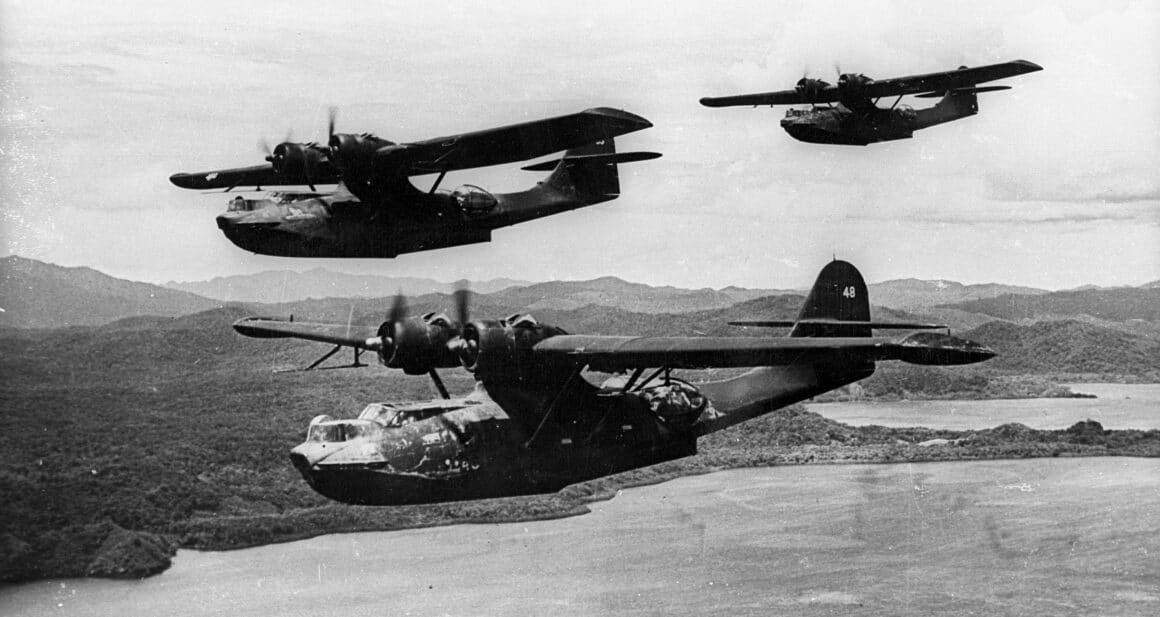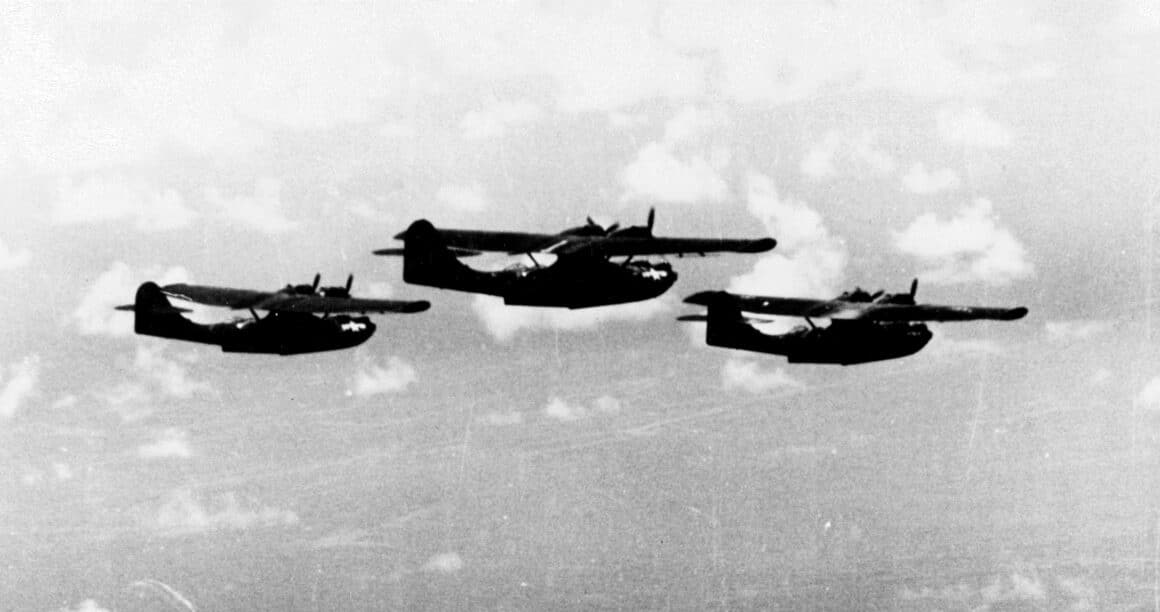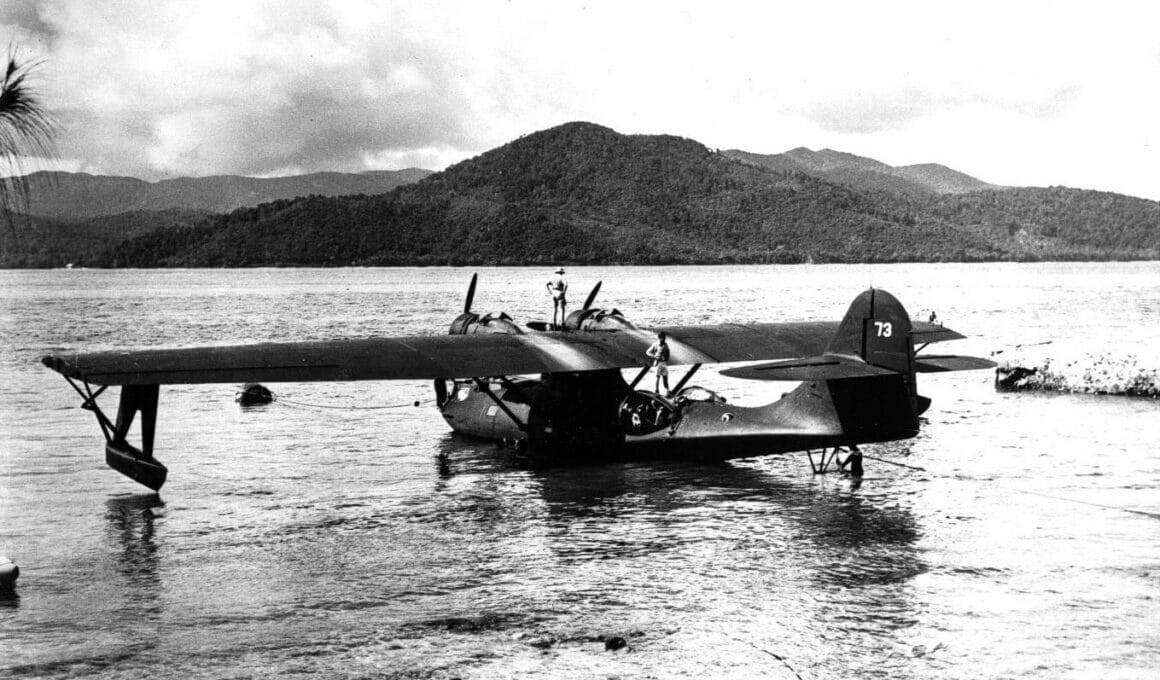PBY Pilot Gordon and His Crew Snatched Downed Bomber Crews From Under Japanese Noses
Nathan Green Gordon was born in Morrilton in Arkansas on 4 September 1916. His education began in public schools until his junior year in high school, after which he attended Columbia Military Academy in Columbia, Tennessee for his final two years of high school. After graduating as class Salutatorian in 1933, Gordon attended Arkansas Polytechnic College in Russellville, Arkansas. While in college Gordon enlisted in the Arkansas Army National Guard. After graduating from Arkansas Poly, Gordon went to the University of Arkansas Law School. He graduated in 1939 with a Juris Doctor Law degree in 1939.

Learning to Fly the PBY
Gordon actually practiced law for a couple of years before enlisting in the Navy in May of 1941. Gordon went to Naval Air Station (NAS) Jacksonville to learn to fly. He was there when the Japanese attacked Pearl Harbor. Gordon then went to NAS Norfolk where he completed his training and was assigned to Patrol Squadron THREE FOUR (VP-34) Black Cats flying Consolidated PBY Catalina flying boats. VP-34 was soon sent to the Caribbean to hunt Kriegsmarine U-Boats. Gordon and VP-34 never saw any U-Boats while flying surface search missions from such places as NAS Guantanamo Bay in Cuba, Kingston in Jamaica, and Trujillo in Honduras.

Heading West to War
On 7 June 1943, VP-34 was reassigned to NAS North Island in San Diego, where the squadron was re-equipped with PBY-5 model Catalinas wearing all-black camouflage. The squadron then proceeded west to Hawaii. Gordon spent six weeks based on Midway flying anti-shipping and antisubmarine patrols before moving to Funafuti Atoll in August of 1943. Gordon flew a reconnaissance mission over Tarawa the day before the start of Operation Galvanic- the invasion of Tarawa and the Gilbert Islands. VP-34 then moved to a seaplane base near Perth in Western Australia until December of 1943, when the globetrotting Black Cats made their way to Samarai Island near Milne Bay, at the extreme eastern tip of New Guinea, in January of 1944.

Arkansas Traveler and Her Crew
LTJG Gordon was the aircraft commander of VP-34 PBY-5 Catalina Bureau Number (BuNo) 08139 tail number 71. The aircraft was named Arkansas Traveler. Gordon’s crew consisted of First Pilot Ensign John “Jack” A. Kelly, Second Pilot Ensign Walter L. Patrick, Third Pilot Ensign Leurelle R. Fulmer, Jr., First Radioman ARM1c Aleck G. Alexander, Second Radioman ARM3c Robert Murch, Plane Captain and First Mechanic AMM1c Wiley R. Routon, Jr., Second Mechanic Joseph “Joe” P. Germeau, Third Mechanic AMM3c John Brately, and Ordnanceman/Gunner AOM2c Paul J. Wodnick.

Tough Crews Attacking a Tough Target
Assigned to air alert/rescue duty (Dumbo) with the code name Gardenia Six, Arkansas Traveler departed Samarai on 15 February 1944 bound for a rendezvous near the Vitu Islands with four white-tailed Republic P-47D Thunderbolts from Neel Kearby’s 348th Fighter Group (FG) out of Finschafen to provide escort for the lumbering and vulnerable Catalina. Kavieng is a port city located at the far western tip of New Ireland. Firth Air Force mission 46D-1 called for four squadrons of Douglas A-20 Havoc strafers from the 3rd Bombardment Group (BG) Grim Reapers to attack shipping targets in the harbor. Seven squadrons of North American B-25 Mitchell strafers from the 38th BG Sun Setters and 345th BG Air Apaches were to attack the facilities supporting the harbor at Kavieng.

The Guts to Try
Heavily-defended Kavieng lived up to its reputation that day. The first rescue call came in at about 1100 local time after A-20G Havoc SN 42-86616 assigned to the 13th Bomb Squadron (BS) of the 3rd BG crewed by pilot 1st LT William T. Pearson and gunner MSgt Donald N. Gamage, was shot down and crashed about 35 miles southwest of Kavieng. Gordon and his crew could not tell from the air whether or not the crew of the A-20G was alive so they power-stalled the flying boat on the rough seas between the fifteen-foot high swells. A search of the debris did not yield any survivors and Arkansas Traveler took off again. The crew reported that the open-water landing had sprung rivets and split seams in the bottom of the hull. The crew broke pencils off in the worst of the popped rivet holes and broke out the buckets. After taking off again the PBY-5 waited for more business. It didn’t take long.

